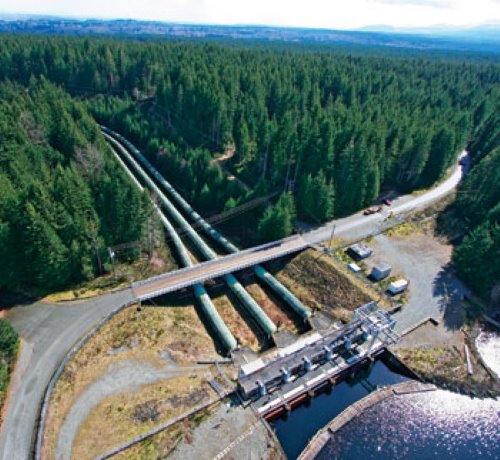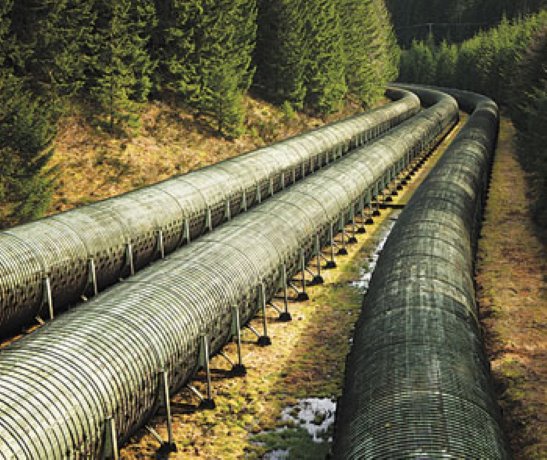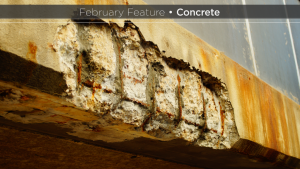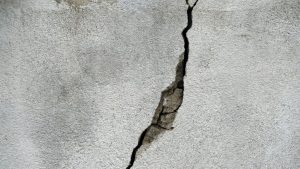Construction is slated to start on BC Hydro’s largest capital project next year. The design-build contract for the $1.3 billion rebuild of the John Hart generating station is projected to start next summer.
Construction is slated to start on BC Hydro's largest capital project next year.
The design-build contract for the $1.3 billion rebuild of the John Hart generating station is projected to start next summer.
“Construction should then start immediately,” said stakeholder engagement advisor Stephen Watson, with the Crown corporation.
The station is located near Campbell River on Vancouver Island and was built in the 1940s.
The Request for Qualifications (RFQ) closed April 25, with BC Hydro picking three groups that have until spring 2013 to come up with a design-build proposal.
A proposal will be chosen by summer.
Key project elements are: a new generating station next to the existing one, a new bypass to spill into the Campbell River, a tunnel replacing three water pipelines, a new intake, plus road and trail work and the replacement of the 12.9 ton capacity Brewster Lake road bridge with a 27.2 ton span.
The five-year project includes four years of construction with facilities removal (old power plant and pipelines) adding another year.
It is expected to create 2,000 person years of work, or an average of about 400 jobs per year with 2014 reaching a peak of almost 500 jobs.
“BC Hydro has been working with local First Nations on some training – mainly carpentry and environmental monitoring,” Watson said.
The Campbell River area’s underutilized resource sector, as indicated by the North Island Employment Foundations Society, is expected to provide a reserve of skills, trades and equipment.
“BC Hydro has had a good apprenticeship program for years on the various trades, such as power line technicians and electricians. We will need to wait to see what may develop when the contract is awarded,” Watson said.
Three pipelines feed the current station’s six generating units.
The first pipeline was built in 1947 and the last two in 1953.
The project calls for pipeline removal, of which 1.1 kilometre sections are woodstave (like barrel construction) and the rest steel.
The woodstave pipe has been treated with creosote for up to 65 years, resulting in needed soil rehab.
BC Hydro information states that 4,700 cubic metres of waste soil, 2,100 cubic metres of hazardous soil and 880 cubic metres of wood from the woodstave pipe area will be removed, treated, or dealt with.
In addition, there will be 310,000 kg of steel in the form of ring girders and bands from the woodstave pipe and 2 million kg of steel pipe to dispose of.
A 2.1 km tunnel will run from the dam to the power station.
“We were going to replace the existing pipeline, but the sand and soil underneath the pipeline didn’t allow it,” said Watson.
“We are in an active earthquake zone.”
A seismic upgrade and continued maintenance would be costly.
“We looked at what it would cost to put in the tunnel through bedrock and the cost would be very similar,” he said.
The tunnel diameter varies from 6.5 to eight metres and is 60-100 metres below grade.
Some sections will run through rock, others will be steel-lined.
The generating station’s location is being left up to the design-build team selected, Watson said, adding facility design will depend upon the location’s topography.
A new bypass will speed water into the Lower Campbell, a fish-sensitive area.
Currently, it can take up to 45 minutes to divert water if a generator fails.
About 95 per cent of the river’s feed passes through the generating station.
The intake will be moved to the reservoir’s spillway, 300 metres east, and the old one plugged with concrete.
The new intake will be cut through the base of the spillway dam and then go into the exposed bedrock downstream of the dam.
A caisson dam will be attached upstream of the dam, drained and will provide crews with a work area.
No reservoir draw down is required.
Once the new intake is through the spillway dam, it enters a steel pipeline encased in concrete and then enters the bedrock tunnel.
Watson said it is up to the final design and build team to determine what kind of bridge will replace the current 67-metre Brewster Lake Bridge now in place.
BC Hydro is currently awaiting approvals from Oceans and Fisheries Canada, which are expected to be finalized in winter 2012.
The B.C. Utilities Commission approval is expected spring 2013.
The BC Hydro John Hart replacement project will require 6,200 tons of steel and rebar, 105,000 cubic metres of concrete and 36,400 cubic metres of aggregate.
Crews will be required to remove 295,000 tons of waste rock and 140,000 tons of soil.












Recent Comments
comments for this post are closed